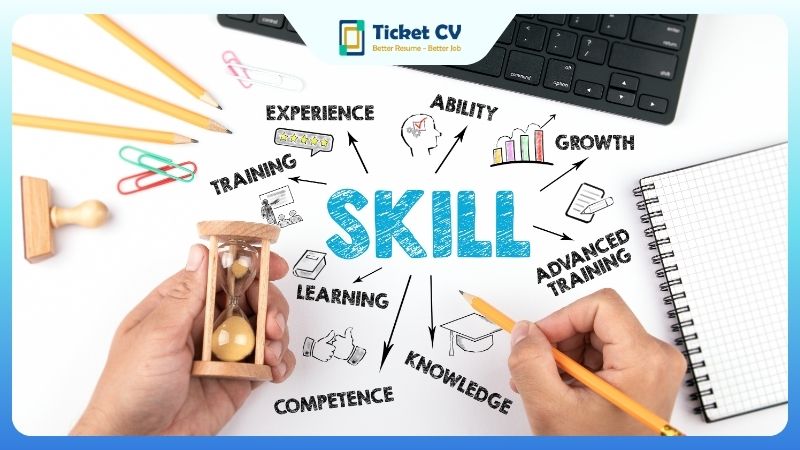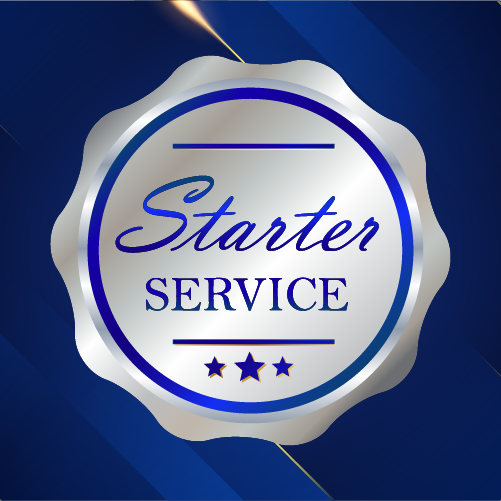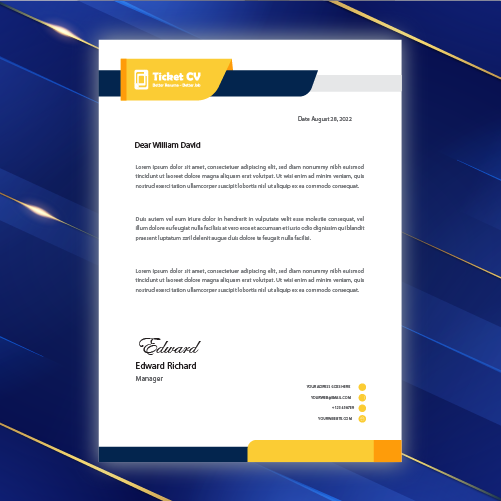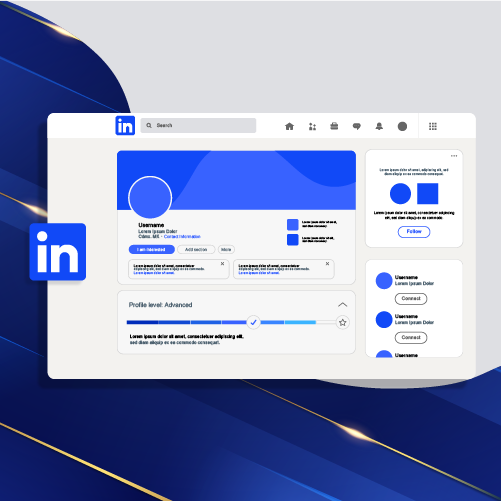Computer skills, including knowledge of office software, techie abilities, accounting software expertise, and coding proficiency, are crucial in today’s job market. Showcasing techie and expert tip technical abilities, such as in-demand computer skills and hardware skills, can significantly impact the success of an application, making it essential to highlight relevant competencies effectively. This article provides a comprehensive summary of the key sections to include when emphasizing computer skills on a resume, offering valuable insights for individuals seeking to enhance their career prospects in the techie field. It is especially relevant for those working in an office environment and looking to highlight their research and writing abilities.
Employers increasingly seek candidates with strong technical proficiencies, such as being computer literate and having in-demand computer skills and hardware skills, to make a substantial difference in securing an interview. It’s important for job seekers to showcase their techie abilities on their resume. In this piece, techie readers will gain valuable information on how to strategically incorporate computer skills into their office resumes, creating a stronger connection between their expertise and the needs of prospective employers. This can be achieved by emphasizing proficiency in email and effectively displaying technical abilities. By sharing practical tips and advice, this article aims to assist techies in crafting resumes that effectively communicate their display of technical prowess and suitability for roles requiring computer-related competencies. It’s a useful tool to use.
Table of Contents
ToggleUnderstanding Computer Skills on a Resume
Defining Computer Proficiency
Computer proficiency encompasses a range of technical skills, from basic computer literacy to advanced programming languages. Displaying these skills effectively on a resume can be achieved with the right tool and by including relevant resume examples and a compelling resume summary. Technical skill refers to the ability to use and understand various computer applications and systems. It is an important tool to include in your resume summary. Employers often seek candidates with strong computer proficiency due to the increasing demand for technology skills in the workforce. It’s important to use these skills to craft a compelling resume summary.
Importance of Computer Skills in the Job Market
The job market has seen an increasing demand for computer skills due to technological advancements. It is important to use these skills to create a compelling resume summary. In fact, 82% of middle-skill jobs require digital skills such as being computer literate and using spreadsheets and word processing. Technology has transformed job requirements, with 77% of jobs now requiring some level of computer literate technology skills. This highlights the impact of computer skills on employability and career advancement.
Identifying Key Computer Skills for Employment
Employers value a wide range of computer skills, including software, hardware, and social media competencies. Specific software skills such as Microsoft Office Suite proficiency are highly sought after, with 78% of middle-skill jobs requiring these capabilities. Demand for computer skills is crucial in many technical roles. Knowledge of hardware components and troubleshooting is essential. Social media skills have also become increasingly important, especially in marketing and communications positions.

Alternative Terminology for Computer Skills
Synonyms for Technical Savvy
Individuals can use alternative terms such as “demand for computer skills,” “technical proficiency,” “technological adeptness,” or “IT competence.” These synonyms effectively convey the candidate’s familiarity with various technologies and systems. Diversifying language in a resume by incorporating these alternative terms can enhance the overall impression of the applicant’s technical prowess.
Variations for Software Expertise
In showcasing technical skill and software expertise on a resume, candidates can utilize different terminology to demonstrate their proficiency with specific programs or applications. For instance, they may describe their software skills as “proficiency in Microsoft Office Suite,” “expertise in graphic design software,” or “advanced knowledge of project management tools.” Tailoring the descriptions of software expertise to match job requirements is crucial as it highlights the candidate’s suitability for the role and increases their chances of being shortlisted for an interview.
Describing Hardware Competence
When articulating hardware competence on a resume, individuals can use diverse terminology such as “hardware proficiency,” “technical acumen in computer hardware,” or “expertise in network infrastructure.” By accurately describing their hardware knowledge and skills using varied terminology, candidates can effectively communicate their ability to work with different types of hardware components and systems.
Employing synonyms like ‘technical proficiency,’ ‘technological adeptness,’ or ‘IT competence’ diversifies language on a resume while conveying familiarity with various technologies. Candidates should tailor descriptions of their technical skill in software expertise to match job requirements, increasing their chances of being shortlisted for an interview. Using diverse terminology such as ‘hardware proficiency’ effectively communicates ability to work with different types of hardware components and systems.
Showcasing Computer Skills Effectively
Structuring Your Skills Section
When structuring the skills section of a resume, it’s essential to organize it strategically. Start by listing specific software skills relevant to the job, such as proficiency in Microsoft Office Suite, Adobe Creative Cloud, or programming languages like Python and Java. Utilize action verbs like “developed,” “implemented,” or “managed” to demonstrate computer proficiency effectively.
To capture attention, consider using effective formats for presenting computer skills on a resume. This could involve categorizing skills under subheadings like “Technical Proficiency” or “Software Competencies.” Emphasize the importance of clarity and readability in structuring the skills section. A well-organized layout with bullet points can make it easier for hiring managers to identify key computer competencies quickly.
Tailoring Skills to Job Descriptions
Aligning computer skills with specific job descriptions is crucial. Tailor skill sets based on job requirements by customizing them according to the needs of each role. For instance, if a job posting emphasizes social media management, highlight social media skills and experience with analytics tools. Customizing your skill set based on job descriptions demonstrates your understanding of what the role demands and increases your chances of standing out as an applicant.
Quantifying Achievements
Quantifying achievements in the work experience section can significantly enhance the portrayal of technical competencies. For example, instead of simply stating “proficient in graphic design software,” quantify this achievement by specifying that you “increased social media engagement by 30% through graphic design projects.” Incorporating data and metrics showcases competency in technology-related tasks while utilizing action verbs when describing technical skills conveys ability and impact effectively.
Where to Highlight Computer Expertise on a Resume
Placement Strategies for Skills Section
The skills section is crucial. Prioritize relevant technical skills in this section based on the job description. For instance, if a job requires proficiency in specific software or programming languages, prioritize these skills in the list.
Use specific examples of computer skills in the work experience section to demonstrate proficiency. For example, if an individual has experience using Adobe Creative Suite for graphic design projects, they should specifically mention this under their work experience.
Incorporate hardware and software skills into the resume summary for a comprehensive overview. This can provide recruiters with a quick snapshot of an individual’s computer expertise before delving into further details.
Tailor cover letter content to highlight in-demand computer skills and their relevance to the role. By customizing the cover letter to emphasize how one’s computer skills directly align with the requirements of the position, applicants can make a strong impression.
Integrating Skills Throughout the Resume
Integrating technical skills into both the skills section and work experience on a resume is essential. This ensures that an applicant’s proficiency with computers is prominently featured throughout their application materials.
Using specific software skills in resume examples demonstrates proficiency effectively. For instance, stating “Proficient in Microsoft Excel for data analysis” provides concrete evidence of one’s abilities.
Highlighting computer skills in both the resume summary and cover letter showcases competency from different angles. This multifaceted approach reinforces an applicant’s expertise with computers.
Incorporating hardware skills and social media skills throughout both the resume and interviews demonstrates versatility and adaptability with various technologies.
By following these strategies, individuals can effectively showcase their computer expertise on their resumes, making them more competitive candidates for tech-related positions.

Learning and Enhancing Computer Skills
Resources for Skill Development
Online courses and tutorials play a pivotal role in developing technical skills. These resources offer flexibility, allowing individuals to learn at their own pace and from the comfort of their homes. Joining professional networking platforms such as LinkedIn provides access to industry-specific groups and discussions, fostering knowledge sharing and skill enhancement.
Utilizing industry-specific software is crucial for improving computer competency. For instance, individuals in graphic design may benefit from mastering Adobe Creative Suite, while those in data analysis could leverage tools like Tableau or Power BI. By gaining practical experience through internships or volunteer work, individuals can strengthen their technical abilities while also demonstrating their commitment to continuous learning and development.
Online Courses and Certifications
Completing online courses not only enhances one’s computer skills but also demonstrates technical competency to potential employers. According to a survey conducted by Coursera, 87% of learners reported career benefits after completing online courses, with 33% receiving a pay raise or promotion. Moreover, certifications in software skills and internet proficiency can significantly boost career opportunities. A study by Indeed revealed that job postings requiring certification in specific software applications saw an average salary increase of 22%.
By adding online courses and certifications to a resume’s skills section, individuals showcase their dedication to improving their technical skill set. In fact, according to LinkedIn’s 2021 Workplace Learning Report, 76% of professionals believe that listing online courses on their resumes helped them stand out during the hiring process. This highlights the value employers place on continuous learning and upskilling within the digital landscape.
Listing Computer Skills on LinkedIn
Optimizing Your LinkedIn Profile
When creating or updating your LinkedIn profile, it’s essential to include a dedicated “Skills” section to showcase your computer proficiency. Highlighting in-demand computer skills such as software proficiency and technical expertise can attract the attention of potential employers. By specifying your hardware and software skills, you demonstrate your competency in the field of computer literacy.
In addition to the “Skills” section, it’s crucial to highlight your technical skills and computer proficiency in the “Summary” section. Incorporating relevant keywords related to computer skills in your LinkedIn headline and summary can improve the visibility of your profile to recruiters and hiring managers searching for specific skill sets.
Showcasing your expertise with collaboration tools and software skills in the “Experience” section further solidifies your computer literacy. This allows recruiters and potential employers to gain insight into how you have applied these skills in previous roles, reinforcing their importance on your resume.
Endorsements and Recommendations
Endorsements and recommendations play a vital role in strengthening your resume by showcasing your computer skills through the perspectives of others. Utilizing endorsements strategically can highlight specific computer skills relevant to the job you’re applying for, providing social proof of your competencies.
LinkedIn provides a valuable platform for gathering endorsements and recommendations from colleagues, supervisors, and other professionals who can vouch for your computer skills. According to LinkedIn data, profiles with complete information receive up to 40 times more opportunities than those with incomplete details, emphasizing the significance of leveraging endorsements and recommendations effectively.
Expert tip: Including endorsements and recommendations in your cover letter or resume summary can reinforce your computer skills and abilities while adding credibility to your application. Recruiters are more likely to take notice when they see that others endorse or recommend specific computer-related proficiencies listed on your profile.
By optimizing both the content within each section of your LinkedIn profile and leveraging endorsements strategically, you can effectively showcase a comprehensive array of computer skills that align with industry demands while enhancing professional credibility.
Incorporating Computer Knowledge in Cover Letters
Connecting Skills to Company Needs
When highlighting specific software skills in a cover letter, it’s crucial to align these technical competencies with the specific software and hardware needs of the company. This alignment demonstrates an understanding of the company’s requirements and showcases how the applicant’s computer skills can directly contribute to fulfilling those needs. Emphasizing the ability to use collaboration tools and social media skills that are in demand can further enhance the relevance of computer proficiency to the company’s objectives.
Showcasing how computer skills can contribute to business objectives is essential for demonstrating their value. By connecting one’s computer literacy directly to the core goals of the company, applicants can effectively communicate their capacity to leverage technology for achieving organizational success. Furthermore, integrating these skills into the resume summary not only highlights their importance but also serves as an immediate demonstration of their relevance.
Highlighting Transferable Computer Skills
Incorporating examples of how computer literacy has positively impacted work experience is a powerful way to highlight transferable computer skills. For instance, if an individual utilized specific software or technical expertise to streamline processes or improve productivity in previous roles, this should be clearly articulated in both cover letters and resumes. Emphasizing adaptability and quick learning in tech environments also showcases transferable computer skills by indicating an individual’s capacity to rapidly acquire new technical competencies as needed by different roles or projects.
When showcasing basic computer skills and technical expertise, it’s important to emphasize relevant proficiencies tailored specifically for the job at hand. For example, if a role requires familiarity with particular software or hardware systems, applicants should ensure that these proficiencies are prominently featured in their application materials. Moreover, demonstrating proficiency in essential software and hardware through concrete examples from past experiences reinforces an applicant’s capability in utilizing these tools effectively.
By integrating demand for computer skills into both cover letters and resumes, individuals signal their awareness of contemporary professional requirements. This proactive approach underscores not only technological competence but also a keen understanding of industry demands. Furthermore, by connecting one’s skill section with competency required for interviews, candidates present a comprehensive overview of their qualifications that directly addresses potential employer needs.

Displaying Computer Proficiency in Interviews
Preparing Examples of Technical Abilities
When highlighting computer proficiency in a resume, it’s crucial to include specific examples of hardware and software skills. By detailing these technical abilities in the skills section, candidates can effectively showcase their expertise. Emphasizing computer proficiency through relevant work experience examples demonstrates a practical application of skills.
Demonstrating technical abilities with clear and concise examples is essential. For instance, specifying the use of programming languages or software applications in previous roles provides tangible evidence of competency. This approach not only reinforces computer proficiency but also underscores its relevance to the job at hand.
Demonstrating Problem-Solving with Technology
Utilizing programming languages to solve complex technical issues is a valuable demonstration of computer proficiency during interviews. For example, showcasing how one resolved a challenging technical problem by writing code or developing a custom solution illustrates advanced skill levels. Moreover, employing collaboration tools to streamline team projects showcases adaptability and the ability to leverage technology for efficient teamwork.
Demonstrating proficiency in various software applications further solidifies one’s suitability for a role requiring computer skills. Providing specific instances where expertise in software such as project management tools, graphic design programs, or data analysis platforms was instrumental highlights versatility and adaptability.
Applying computer literacy to troubleshoot and resolve technical challenges is another pivotal aspect when demonstrating problem-solving with technology. Sharing experiences where quick thinking and adept use of technology led to successful troubleshooting not only emphasizes competence but also exhibits an ability to adapt and learn new technologies swiftly.
Incorporating these aspects into interview discussions can significantly enhance one’s prospects by presenting concrete evidence of their computer proficiency and problem-solving capabilities.
Describing Basic Computer Skills
Common Essential Computer Skills to Include
Basic computer skills are crucial for navigating the various software and operating systems commonly used in the workplace. Proficiency in Microsoft Office Suite, including Word, Excel, and PowerPoint, is essential for tasks such as word processing, data entry, and creating presentations. Technical skills like coding languages and database management are highly sought after by employers. Candidates with knowledge of operating systems and the ability to troubleshoot common hardware issues demonstrate valuable computer literacy.
Computer literacy also encompasses proficiency in collaboration tools such as Slack or Trello and social media skills, which highlight a candidate’s adaptability and modern skill set. For instance, an individual proficient in using project management software showcases their ability to work effectively in a team environment. Likewise, familiarity with social media platforms can be advantageous in roles that involve marketing or customer engagement.
Differentiating Proficiency Levels
When including computer skills on a resume, it is important to differentiate between basic, intermediate, and advanced proficiency levels. For example, specifying expertise in programming languages like Python or Java indicates a higher level of competency compared to basic knowledge of these languages. Employers value candidates who can adapt to new technology; therefore, highlighting one’s ability to quickly learn and apply new software or hardware demonstrates demand computer skills.
Moreover, statistical data from a survey conducted by Burning Glass Technologies revealed that 82% of middle-skill jobs require digital skills like Excel proficiency or data analysis – showcasing the high demand for technical skills across various industries. By differentiating proficiency levels on their resumes – whether through specific software applications or hardware competencies – job seekers can effectively communicate their level of expertise.
In another study conducted by Pearson VUE & Burning Glass Technologies on job postings from diverse industries over five years found that employment opportunities requiring programming languages increased by 50%, emphasizing the growing importance of technical abilities in today’s job market.
Conclusion
In today’s competitive job market, effectively communicating one’s computer skills on a resume is crucial. Using alternative terminology, strategically showcasing these skills, and integrating them into various aspects of the job search process can significantly enhance one’s professional profile. By understanding the importance of computer skills and continuously seeking to learn and improve in this area, individuals can stay ahead in their careers.
As technology continues to evolve, staying updated with the latest computer skills is essential for career growth. The ability to adapt and demonstrate proficiency in various computer applications can open doors to new opportunities. Embracing a proactive approach to learning and showcasing computer skills will not only bolster one’s resume but also position them as a valuable asset in today’s digital workforce.
Frequently Asked Questions
What are some alternative terms for computer skills on a resume?
Some alternative terms for computer skills on a resume include “technical skills,” “IT skills,” “digital literacy,” and “technological proficiency.”
Where should one highlight their computer expertise on a resume?
Computer expertise should be highlighted in the skills section of a resume, typically located near the top to grab the attention of potential employers.
How can someone effectively showcase their computer skills on a resume?
To effectively showcase computer skills on a resume, individuals should use action-oriented language and provide specific examples of how they have utilized these skills in previous roles.
Should basic computer skills be included on a resume?
Yes, it’s important to include basic computer skills on a resume as they demonstrate fundamental technological proficiency that may be relevant to the role.
How can someone incorporate their computer knowledge into cover letters?
Incorporating computer knowledge into cover letters involves highlighting specific instances where such skills have been utilized to solve problems or achieve goals. This demonstrates practical application and relevance to the position.












